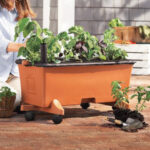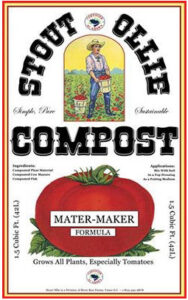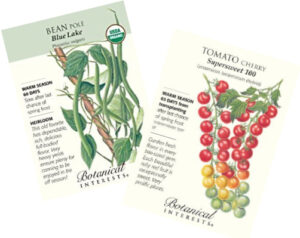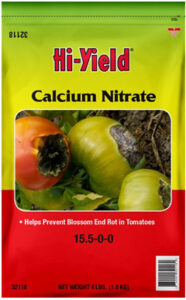Vegetable Gardening
We are all about “locally grown” these days in order to get the freshest, best tasting, “good for us” vegetables. And… you CAN’T get much more local than your own back yard! The satisfaction and pleasure gained from eating your own plump, juicy tomatoes, crisp, refreshing cucumbers, (the list goes on…) AND the confidence you have in the quality and safety of the foods you are consuming, are a few of the reasons folks are inclined to get down and dirty planting their own vegetable garden. Let’s talk about how you can do it, too!
Having a growing season that stretches from March to November is a perk, living in South Carolina,
providing an environment for warm and cool season vegetable gardening, each season supporting various produce. Warm weather is the prime time for tomatoes, beans, squash, cucumbers, peppers, and more, and in the cooler weather, an abundance of broccoli, cauliflower, lettuces and other greens can be harvested. It is actually possible to have two crops of cool weather vegetables in the same year, by planting in spring and fall. Check out Clemson’s Planting Guide HERE.
PLANNING is STEP #1 for your garden and here are a few considerations:
- Do you have an area that receives at least 6 hours of direct sunlight?
- What’s the quality of the soil in your yard? Have you ever had it tested?
- How big do you want your garden to be?
- Would you prefer a raised bed or small space garden?
- Do you have a nearby watering source?
- What do you want to grow?
Now that you have an idea of what is needed, let’s move to STEP #2 – PREPARING. Let’s talk size and soil.
 SIZE – Start Small! Better to have a small garden with fewer weeds to control, than a larger one. A 10’ x 10’ is a good size for a beginner in-ground garden. Researching space requirements for each of the vegetables you intend to grow will help you determine how many plants you will need. This info is available on the seed packet or plant tag. If you prefer a small-space garden, there are many options such as Earthboxes, Raised Bed Kits, and Pottery/Container Gardens. You will be surprised by the quantity of plants that can be accommodated per square foot.
SIZE – Start Small! Better to have a small garden with fewer weeds to control, than a larger one. A 10’ x 10’ is a good size for a beginner in-ground garden. Researching space requirements for each of the vegetables you intend to grow will help you determine how many plants you will need. This info is available on the seed packet or plant tag. If you prefer a small-space garden, there are many options such as Earthboxes, Raised Bed Kits, and Pottery/Container Gardens. You will be surprised by the quantity of plants that can be accommodated per square foot. SOIL – Other than water, soil is the most critical element in how well your garden grows! Nutrients and drainage are key. To identify deficiencies, have your soil tested through the local Clemson Extension office. Stop by our Check-Out and we will assist you in processing an application and provide sample bags. Drainage issues are likely in areas of clay soil; a raised bed garden will provide a better growing medium in clay. Raised bed, Earthbox, and container gardens can achieve perfection as far as soil is concerned. The best soil and compost is available to purchase and gives you an edge on success. An in-ground garden is going to need a little more help, so add soil amendment and compost to provide valuable nutrients and improve drainage. Click HERE to view Wingard’s soils and composts. TIP: For the absolute best ever tomatoes, try Stout Ollie Compost to enrich the soil…it’s amazing!
SOIL – Other than water, soil is the most critical element in how well your garden grows! Nutrients and drainage are key. To identify deficiencies, have your soil tested through the local Clemson Extension office. Stop by our Check-Out and we will assist you in processing an application and provide sample bags. Drainage issues are likely in areas of clay soil; a raised bed garden will provide a better growing medium in clay. Raised bed, Earthbox, and container gardens can achieve perfection as far as soil is concerned. The best soil and compost is available to purchase and gives you an edge on success. An in-ground garden is going to need a little more help, so add soil amendment and compost to provide valuable nutrients and improve drainage. Click HERE to view Wingard’s soils and composts. TIP: For the absolute best ever tomatoes, try Stout Ollie Compost to enrich the soil…it’s amazing!
 Now, for the FUN part….PLANTING – STEP #3. It’s advisable to begin seed planting indoors in Jan/Feb, and move outside when frost is no longer likely. Buy good seeds… Botanical Interests seeds, known for quality and great packaging (extensive information inside and outside of the pack), are available in the Produce Market. Cool weather plants are available in the fall and again in mid-February, however, if we have a hard freeze, they will need protection. About Mid-March, you will find a full selection of Bonnie’s cool and warm weather plants at Wingard’s. The Rule of Thumb is to plant vegetable plants by Good Friday. Follow spacing guidelines for individual plants and maximize vertical space in the garden by trellising vining plants. Be sure to place tall and trellising plants on the north side, so they will not block sun from the smaller ones. Group plants by growing period and fertilizing needs, and rotate from year to year. The Flower and Garden Almanac & Calendar for the Midlands, compiled by Lexington’s Master Gardeners, is a great resource for vegetable gardening, as well as general gardening in the Midlands, and is available in the Gift Shoppe.
Now, for the FUN part….PLANTING – STEP #3. It’s advisable to begin seed planting indoors in Jan/Feb, and move outside when frost is no longer likely. Buy good seeds… Botanical Interests seeds, known for quality and great packaging (extensive information inside and outside of the pack), are available in the Produce Market. Cool weather plants are available in the fall and again in mid-February, however, if we have a hard freeze, they will need protection. About Mid-March, you will find a full selection of Bonnie’s cool and warm weather plants at Wingard’s. The Rule of Thumb is to plant vegetable plants by Good Friday. Follow spacing guidelines for individual plants and maximize vertical space in the garden by trellising vining plants. Be sure to place tall and trellising plants on the north side, so they will not block sun from the smaller ones. Group plants by growing period and fertilizing needs, and rotate from year to year. The Flower and Garden Almanac & Calendar for the Midlands, compiled by Lexington’s Master Gardeners, is a great resource for vegetable gardening, as well as general gardening in the Midlands, and is available in the Gift Shoppe.
 As you anticipate the feast of your harvest, don’t get side-tracked and forget that STEP #4 – MAINTAINING your vegetable garden is of great importance. ADEQUATE WATERING IS ESSENTIAL! Adding an irrigation system sets you way ahead of the game, otherwise, keep the hose close. Starting with seeds, keep them damp to encourage germination. For individual plants, water daily unless soil is wet. Sometimes, it’s tricky, but don’t overwater – the roots will rot. As the plants grow and the temperature rises, increase watering to twice a day. Feed routinely with organic fertilizers and keep an eye out for disease and pests. Check for signs of aphids, caterpillars, Japanese beetles and spots on leaves or stalks. Visit Wingard’s Plant Pharmacy and talk to one of our knowledgeable staff for guidance on fertilizing or problems that may arise. Many organic and chemical products appropriate for edibles are available. TIP: Avoid Blossom End Rot on tomatoes by treating with Calcium Nitrate, applying directly into the hole when planting and intermittently as directed.
As you anticipate the feast of your harvest, don’t get side-tracked and forget that STEP #4 – MAINTAINING your vegetable garden is of great importance. ADEQUATE WATERING IS ESSENTIAL! Adding an irrigation system sets you way ahead of the game, otherwise, keep the hose close. Starting with seeds, keep them damp to encourage germination. For individual plants, water daily unless soil is wet. Sometimes, it’s tricky, but don’t overwater – the roots will rot. As the plants grow and the temperature rises, increase watering to twice a day. Feed routinely with organic fertilizers and keep an eye out for disease and pests. Check for signs of aphids, caterpillars, Japanese beetles and spots on leaves or stalks. Visit Wingard’s Plant Pharmacy and talk to one of our knowledgeable staff for guidance on fertilizing or problems that may arise. Many organic and chemical products appropriate for edibles are available. TIP: Avoid Blossom End Rot on tomatoes by treating with Calcium Nitrate, applying directly into the hole when planting and intermittently as directed.
The “farm to table “ trend we have seen over the last decade has lead us back to “home grown” food with a new recognition and appreciation, however, it is really nothing new. This simple, basic idea gets right to the heart of gardening. Support your local growers, and try your hand at growing your own!
There’s Always Something Blooming at Wingard’s!

